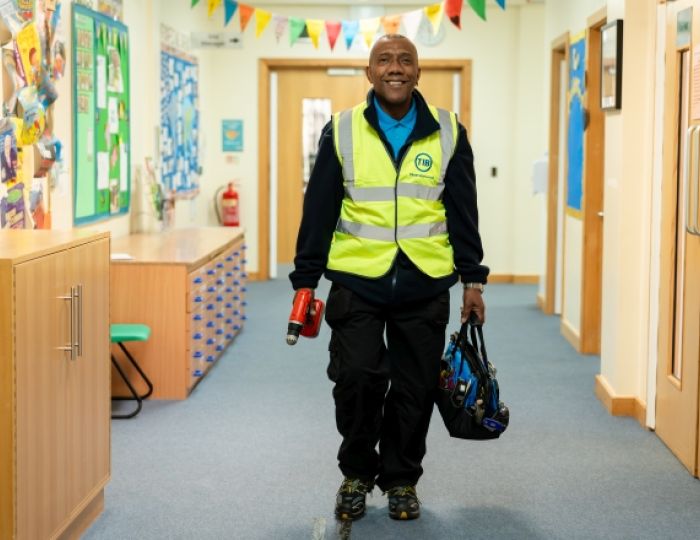Picture this: a parent is looking for a new school for their child.
Conducting their due diligence, they’ve asked friends for recommendations, scoured social media channels, signed up for the email lists of potential schools and checked out various websites.
Now, ask yourself: do our materials stand out from the others? Are they memorable? Do they align with what parents say about us? With what we want them to say about us? Do they tell our true story?
Isn’t branding just marketing?
Now, more than ever, parents have choices for their children’s education. During the pandemic, some families switched schools or even educational models in pursuit of what would work best for their children and for their personal situations.
Many families may not return to the traditional classroom, with plans to stick with virtual or homeschooling.
Recognizing that a dip in enrolment may not be temporary as originally anticipated, schools have scrambled to purchase social media ads, update their websites or create new enrolment packets.
This is not necessarily a bad thing; however, branding isn’t just marketing, and throwing money around without a plan can be wasteful in more ways than one. Let me explain.
Branding beyond the logo
Jeff Bezos, founder of Amazon, famously once said: “Your brand is what people say about you when you’re not in the room.” Think about that for a moment. Whether you like it or not, your brand is out there, and it goes beyond your logo. It is the feeling evoked when someone hears your school’s name or sees something that reminds them of you.
It’s the collection of stories that you’ve told, the images you’ve shared and the testimonials of the students and families you’ve served.
Your brand encompasses both real-life experiences and the perceptions of those in and around your school community. As a school leader, you need to play a role in shaping your brand narrative both internally and externally.
Branding starts on the inside
If you have a poor school culture, your brand will reflect that. There are few other industries where employees and “customers” are so connected, day-in and day-out, than education.
For example, if a teacher is miserable at work, after a while, that misery will be hard to hide from students and from parents who will then question what is happening at the school to cause that.
Or, if your receptionist answers the phone in a curt manner, a potential family could be turned off from applying.
Or, if your development officer is trying to fundraise, but cannot tell the school’s story in a cohesive, compelling way, you will likely not get that donation. So, before you spend money on marketing initiatives, spend some time refining and understanding your brand, and, if there are things that need to be fixed with your culture, do so.
As a communicator who has worked in and with schools for more than 20 years, I’ve always said that I can get families interested in schools, but I’m not going to misrepresent the culture because that’s unethical and if families don’t get what they’ve bought into, you’ll face attrition and a poor reputation
How to rediscover your brand
To figure out who you really are as a school community, you must start with research:
- Talk to your teachers, staff, students, families, community partners and alumni. What do they have to say about your school? Take note of both good and bad things because they make up your brand story. For a sample questionnaire go to holdsworthcommunications.com/questionnaire
- Make an action plan to address the negative feedback. Some of the feedback may be true, some may be caused by misinformation. Figure out what you can easily address in the short-term and make plans to tackle the others over the year.
- List your brand differentiators. What does your school do well? What is it known for? How do people describe your school (circle back to the first bullet point)? How are you different from your competitors? Answering these questions will help you develop a strong brand story.
- Conduct an audit of all your outward-facing materials and digital accounts. Do they all align and look like they represent one school? Are your key messages conveyed consistently? Do the images on social media and the website reflect your student body?
- Determine your brand vision. Determine what you want to be known for and why. How does this tie in with your research and differentiate you from your competitors?
Showcasing your brand
Now that your brand is defined, you can begin planning communications and marketing strategies. Although this article will not go into the variety of tactics you can use to promote your school, I have some tried and true favourites that I utilize for every school branding campaign I work on:
- Student, teacher, parent and alumni testimonials. You would be surprised at how a one-to-two-sentence quote from an actual person your school impacted can positively affect brand perception. I have often used single-line quotes with a strong image in print and digital advertising campaigns because they are so powerful. Be sure to use actual quotes with written permission; anonymous testimonials are not as believable.
- Professional photography. This is a must have for schools because although the everyday snapshots posted on Instagram show the authenticity of school life (which is also important), professional photos can really showcase your community in ways you never could have imagined. Professional photographers, especially those with a photojournalistic style, are trained to look for the special things that we might overlook. And, when those photos come back and you share them with your community, not only does the brand vision begin to make sense, but you’ll notice an air of excitement and pride around the school: “This is our school? Wow! I never looked at it that way before.” For examples of examples of strong photography go to https://bit.ly/3uS8iN3
- Develop a brand ambassador program. Brand ambassadors are community members who are engaged and vocal about your brand and want to share their enthusiasm with others. They can be parents, teachers, staff, students or alumni who will support your branding efforts in many ways from speaking to potential families to providing testimonials to volunteering at school events. Make sure these people are properly trained on your marketing key messages, get them some school-branded swag and check in with them frequently to better understand what they are hearing about your school from outsiders.
Branding does not have to be daunting
My takeaway for you is that branding does not have to involve a big, expensive campaign. Rather, the increased competition with the pandemic has given all schools the opportunity to revisit their core mission, vision and values.
Embrace the chance at re-discovering what makes your school so great and then work strategically to share your stories with others.
Even if you are a neighbourhood school that every child in the area must attend, you still have a brand, you are still making an impact and you still have wonderful people who work and attend school there.
Be proud of everything you’ve accomplished together, particularly over the last year, and don’t be shy about showcasing the great things happening at your school.
As I often say to clients: all schools have a story to tell. What’s yours and who’s telling it?
Branding advice
- What do you want to be known for? When you determine your brand differentiators, you can more effectively communicate it to your target audiences.
- Conduct a materials audit. Does the look and feel of your website match that of your prospectus? Do the newsletters your current families receive look as good as the recruitment pieces you used to attract them? Take all your physical materials, spread them out on a table and quickly glance at them. Do they look like they came from the same school? If you answered, “No,” to any of these questions, start updating and refining.
- Develop a brand style guide and use it. Create a simple document that shows all approved variations of your school’s logo, your school colour codes, school fonts, mission, vision and values, and whatever else should be part of your standardized brand. Then present it to your school community, explaining why branding is important, why the style guide was created and how it can help everyone stay consistent with the school’s brand. To download a free, editable template to create your brand style guide go to schoolcommslab.com/brand-guide
Dr Amanda Holdsworth, APR, has worked in school communications for more than 20 years and is the founder of Holdsworth Communications and the School Comms Lab.










